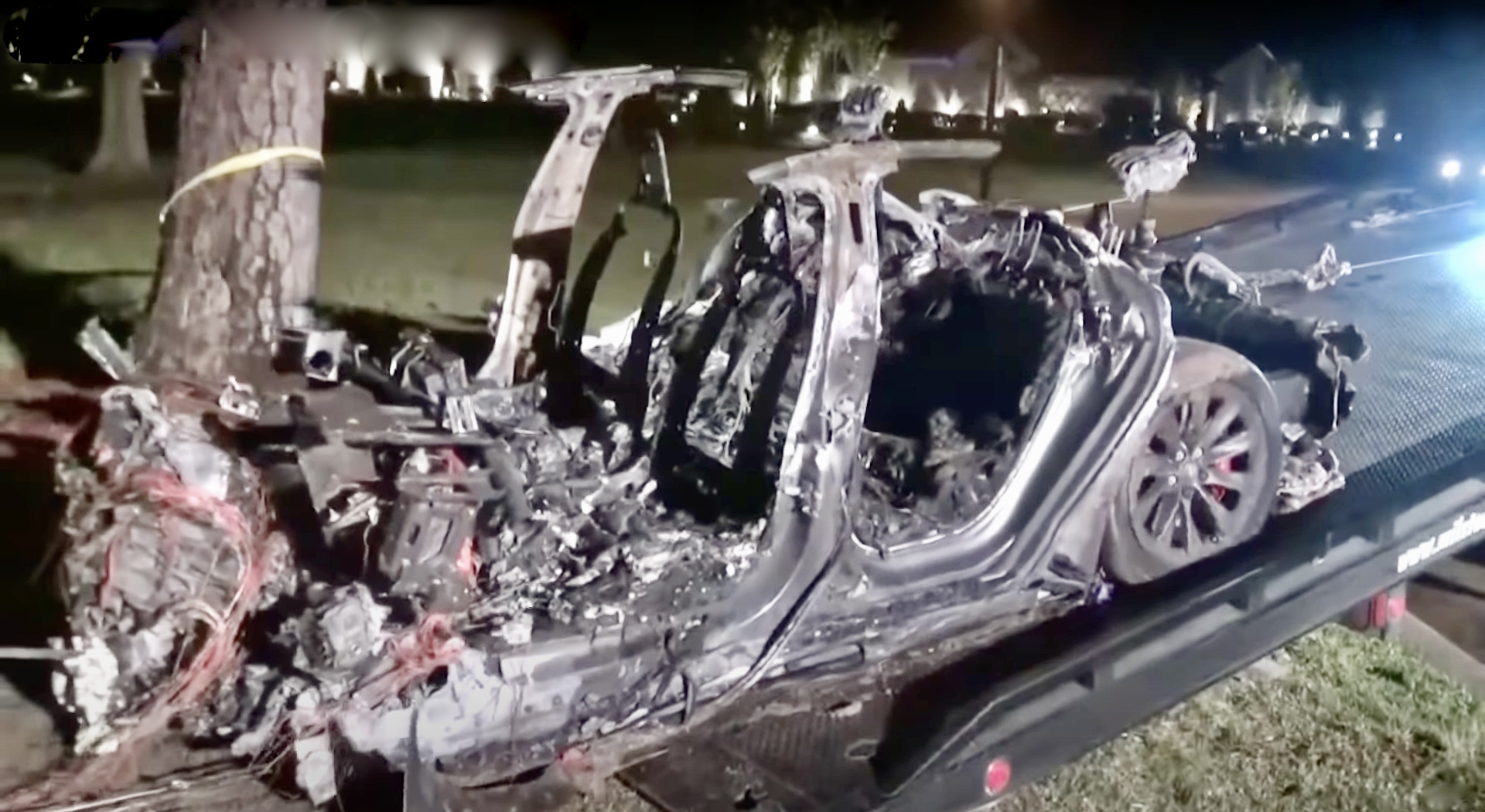

Tesla’s Autopilot system was back in the news earlier this month for all the wrong reasons when a Model S crashed into a tree in a Houston suburb, killing two occupants that first responders found in the passenger and back seats. Given the widely documented cases of Autopilot misuse, it was initially speculated that the system was engaged before this crash, but CEO Elon Musk has repeatedly said this was “completely false.” But Tesla’s Q1 earnings call earlier this week shed a bit more light on the situation, with Tesla Vice President of Vehicle Engineering Lars Moravy saying that at least one Autopilot feature—adaptive cruise control—was on before the fatal crash happened and that someone may have been in the driver’s seat upon impact.
As he often does, Musk originally took to Twitter to share his thoughts on the matter following the crash, further denying the use of Autopilot and saying “data logs recovered so far show Autopilot was not enabled.” Of course, he also took a jab at the media by claiming a random Twitter user’s research on the matter was “better than professionals [sic] at the Wall Street Journal.”
On the earnings call, Musk doubled down on his media criticism. “But, and there was really just extremely deceptive media practices where it was claimed to be Autopilot where this is completely false,” Musk said, according to a transcript of the call. “And those journalists should be ashamed of themselves.”
But Moravy had more to say on the call with regard to what features were used before the crash.
“In that vein, we did a study with them over the past week to understand what happened in that particular crash and what we have learned from that effort was that Autosteer did not and could not engage on the road condition that as it was designed,” Moravy said. If true, this tracks with Tesla’s claims about the Autosteer function, which supposedly only works on a street with clearly marked lanes.
But Moravy confirmed that adaptive cruise control was on when the crash occurred: “Our adaptive cruise control only engaged when the driver was buckled and above 5 miles per hour, and it only accelerated to 30 miles per hour with the distance before the car crashed. As well, adaptive cruise control disengaged the car fully to complete to a stop when the driver’s seat belt was unbuckled.” Police have said the Model was traveling at “a high speed” before impact.
Moravy added that the local and National Transportation Safety Board investigations showed that the car’s steering wheel was deformed, “so it was leading to a likelihood that someone was in the driver’s seat at the time of the crash and all seat belts post-crash were found to be unbuckled.” He also said local investigators were working to recover the data from the SD card at the time of the impact.
It’s key to remember here that Autopilot isn’t just one system, but a suite of features that includes Traffic-Aware Cruise Control, Autosteer, Autopark and more. In other words, if Moravy’s claims are true, it’s possible the occupants used adaptive cruise control on the road but were not buckled in prior to the deadly wreck. It’s even more important to remember these investigations aren’t yet concluded and not all facts are in yet.
Although there are many similar cases, the specific crash addressed by Musk and then Moravy via the earnings call happened on April 17 near The Woodlands, an upscale suburb in the Houston area. Authorities that responded to the Model S crash initially claimed that “no one was driving,” because, despite two bodies being recovered from the crash, neither was found in the driver’s seat.
In fact, a relative of the deceased told a local news station that the owner allegedly “may have hopped in the back seat after backing the car out of the driveway.” Moments later, the car crashed when it failed to negotiate a turn at high speed. Firefighters had to use 32,000 gallons of water to extinguish the blaze.
Nonetheless, the crash raises yet more questions about both the safety of these features and of driver education around them. And as can be expected with all things Tesla, this has turned into yet another social media debate between the brand’s ardent defenders and, well, everyone else, especially in light of Consumer Reports’ latest report on Autopilot.
The publication produced a video to demonstrate just how easy it is to fool Tesla’s system and defeat its driver monitoring features, which, in theory, exists to make sure occupants are awake at the wheel and aware of their surroundings.
Got a tip? Email us at tips@thedrive.com